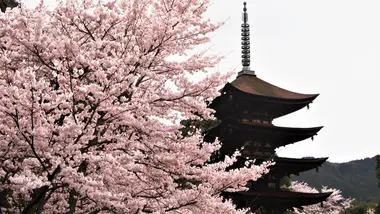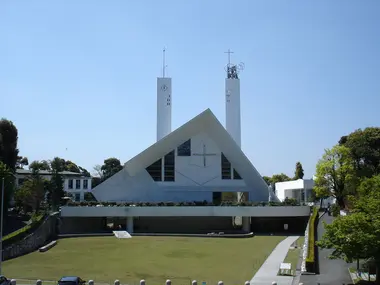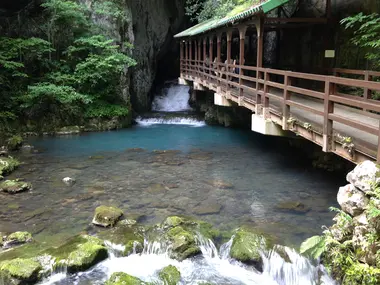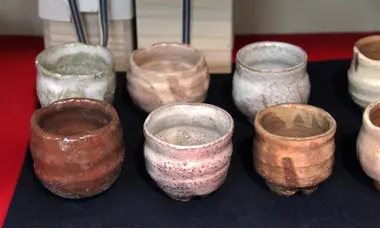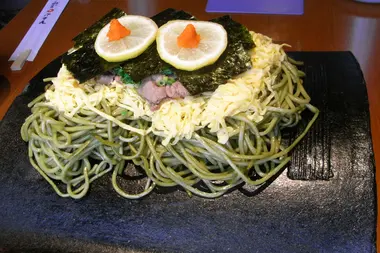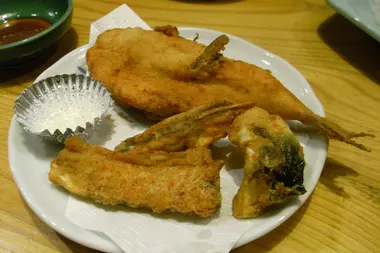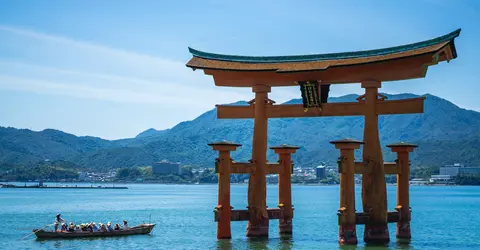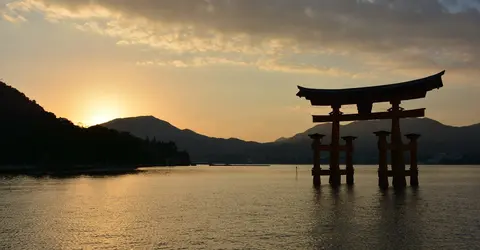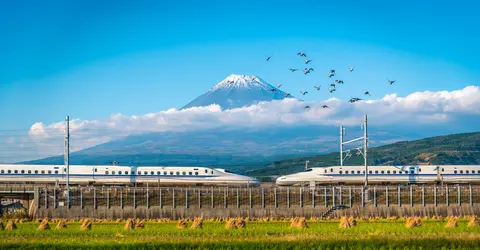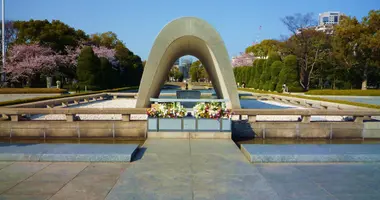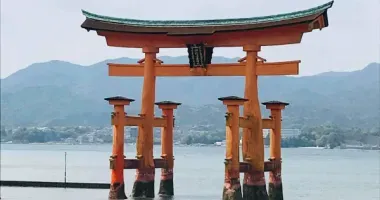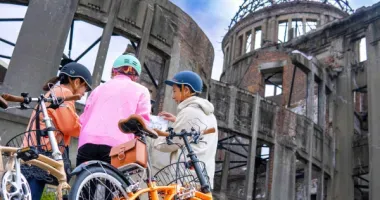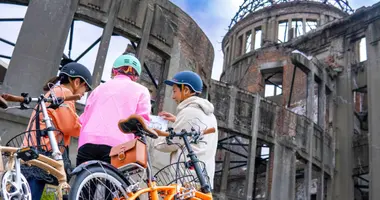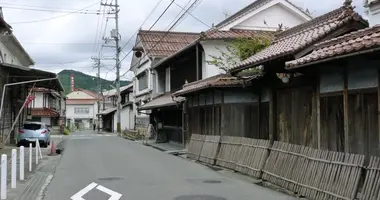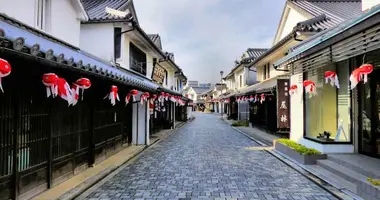Yamaguchi Guide
- Published on : 25/01/2024
- by : Japan Experience
- Youtube
All the way on the southern end of Honshu Island, just north of Kyushu, is Yamaguchi Prefecture. Often cited as “the Kyoto of the West,” Yamaguchi boasts a very rich history, blessed with many ancient structures like temples and shrines while maintaining a charming feel that allows for a more intimate experience. Yamaguchi is fully accessible with the National Japan Rail Pass as well as the JR West All Area Pass that allows for unlimited travel via Shinkansen, local train, and more on the western half of Honshu Island! Visitors can take the Shinkansen bullet train out to Shin-Yamaguchi Station and use that as a basis to get to other parts of the prefecture.
With a number of quaint towns and cities, such as Shimonoseki and Iwakuni, and the capital of Yamaguchi City being listed as a must-visit destination for the year 2024 by the New York Times, travelers ought to come to Yamaguchi with a desire to explore and an open mind to rich experiences that will simultaneously provide a great time to relax.
Shrines and temples to rival Kyoto
A rich spiritual history makes Yamaguchi a destination filled with some of the most picturesque shrines and temples in the country. Within Japanese religion, temples are constructed to service the Buddhist faith, while shrines, often distinguished by the presence of torii gates, are Shinto structures. Additionally, one of the most beautiful cathedrals in Japan is found in Yamaguchi, extending past the spirituality of traditional Japan. Many of these shrines are located nearby Yamaguchi Station, but using the JR West All Area Pass, local lines can be ridden to get to other notable spots throughout the prefecture.
Rurikoji Temple
Within Kozan Park, the iconic silhouette of Rurikoji Temple can be found, boasting a pagoda of five stories that is enveloped in the surrounding tree heads. The structure dates from 1404 during the Muromachi Era and was built by the then lord of Yamaguchi, Moriharu Ouchi, to commemorate the death of his brother.
The pagoda at Rurikoji Temple in Yamaguchi is considered one of the top three pagodas in Japan. The temple park also contains a small museum dedicated to the other 50-plus pagodas in Japan, complete with scale models and photographs. The Rurikoji pagoda is illuminated at night, making it one of the most mystifying sites to be seen in the entire prefecture.
Motonosumi Inari Shrine
Of the many Shinto shrines in Japan, Inari shrines are some of the most distinct, characterized by their fox-themed motifs, bright red decorations, and rows of torii gates. Motonosumi is often seen as a companion to the iconic Fushimi Inari Shrine, and the two share some distinct similarities. The shrine is located in Nagato in Yamaguchi and can be accessed from Shin-Yamaguchi Station with a couple of transfers on JR Lines.
With a winding row of crimson-red torii gates lining a stone staircase that goes out to the coast, travelers will instantly be reminded of the similar scene at Fushimi Inari, but rest assured, it has an atmosphere all-its-own. Something unique about Motonosumi is the placement of its traditional offering box, which is actually placed atop the first torii gate. Typically, this box is placed on the ground, so there’s a bit of luck and skill in play in order for your wishes to be heard by the Gods at Motonosumi.
Joeji Temple and Sesshutei Garden
Heading towards central Yamaguchi in the direction of Tsuwano brings you to the Sesshutei Garden at Joeji Temple (常栄寺). It is believed that the garden was commissioned in the 15th century by Lord Masahiro Ouchi using the services of the painter-priest Sesshu, who was in Yamaguchi at the time, along with many other artists and nobles from Kyoto who had fled the war-torn capital.
The simple rock-and-moss garden, surrounded by maple trees, contains a stone that represents Mount Fuji in its shape. There are paths up into the hills behind the garden. There are also raked-pebble Zen gardens, as well as tatami rooms to relax in while exploring the grounds.
St Francis Xavier Memorial Church
Aside from Buddhism and Shinto, Yamaguchi is also home to a rich Christian history, which is an otherwise non-prominent religion in much of the country. Close to Yamaguchi Station is the beautiful St. Francis Xavier Memorial Church (Sabieru Kinen Seido). The original Gothic-style church, built in 1952 to commemorate the 400th anniversary of Xavier's visit to Yamaguchi, burned down in 1991 and was rebuilt in 1998 in modernist style with stained glass windows.
The church stands atop a hill in Kameyama Park (亀山公園). Below the church is a museum on the life and times of Francis Xavier and his epic journey to Japan. At the foot of the hill is the Yamaguchi Prefectural Museum, which has a wide range of exhibits covering Yamaguchi's history, nature, and geology, as well as the more general themes of science and astronomy.
Other attractions of Yamaguchi
With a prominent seacoast and sub-tropical climate, Yamaguchi boasts some of the best scenery in Japan. Located at the cusp between Kyushu and Honshu, it blends the geographies of both and produces an atmosphere of splendor for visitors and locals alike!
Akiyoshido Cave
Yamaguchi’s most notable natural attraction is Akiyoshido Cave, the largest limestone cave in the entirety of Japan. It can be dated back over 300 million years ago and stretches out around 10 kilometers. The cave interior is filled with awe-inspiring natural formations, from the cave ceilings to the floor.
These naturally include stalagmites and stalactites, but also interesting, layered rock formations that appear frozen in time. The cave interior is also consistently a temperate 17 degrees Celsius throughout the year, regardless of season. Those who go into the cave are sure to be caught up in its wonder. The cave is accessible via direct bus from Yamaguchi Station.
Hagi City
Hagi City sits at the northern end of Yamaguchi. This is a former castle town with history teeming through its streets. A visit to the former castle ruins presents an opportunity to learn more about the region's rich fuedal history. Tokoji Temple is also a notable location as half of the lords of the Mori Clan are buried here.
Also famous in Hagi is Hagiyaki, the famous local pottery that is revered as some of the best in Japan. Travelers can pay a visit to some of the local workshops to see artisans at work, try their hand at the craft itself, and pick up some exclusive souvenirs. Hagi is able to be traveled to direcly from Shin-Yamaguchi Station using the JR West All Area Pass.
The culinary delicacies of Yamaguchi
The same things that provide Yamaguchi with such a distinct atmosphere—rich sea coasts and a distinct climate—provide Yamaguchi with a healthy array of delicious ingredients and a fantastic food culture for people to enjoy. From the oceans to the mountains, eat your way through Yamaguchi and see what the locals love to indulge in!
Fugu
The most famous delicacy from Yamaguchi is, for sure, the infamous fugu blowfish. Known in the west for being poisonous if not properly prepared, fugu is actually more readily available in Japan than many visitors would anticipate and a staple of the culinary culture in Yamaguchi.
Fugu is especially famous in Shimonoseki City, where it is often eaten raw as sashimi or put into luxurious hot pots during the winter.
Yamaguchi’s fugu is known for its delicate flesh with a fair amount of bite to it. Rest assured, the only deaths for fugu come from people, without proper training and certification, catching and attempting to prepare the fish in their own homes, and any reputable or well-established restaurant will know what they're doing.
Kawara Soba
Also synonymous with Yamaguchi is Kawara Soba. Kawara Soba is a type of soba noodle made with green tea powder, and it has a distinct color that reflects this. The soba is as visually appealing as it is delicious, served on a roof tile and mixed with a number of toppings.
These toppings include things such as beef, sliced omelet, and seaweed. Everything is mixed with a sweet bonito sauce, creating a medley of flavors and textures all in one dish. This is a dish often served at specialty restaurants as well as homemade by families in Yamaguchi.

